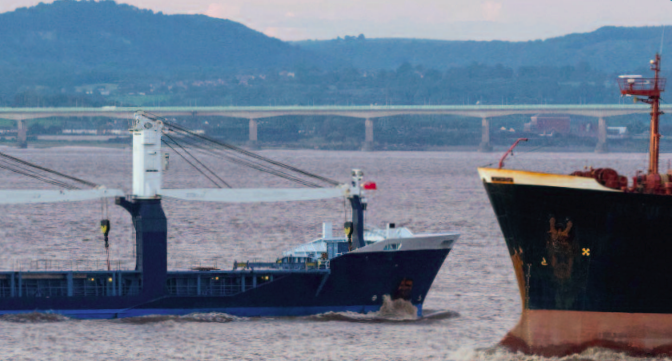In its recently published Casebook containing safety lessons learned from maritime incidents, the Swedish Club describes a collision of two vessels, caused by inefficient lookout under COLREG 5.
The incident
Vessel A was a small general cargo vessel sailing at night in a busy area in the Baltic Sea, with good visibility and a speed of about 10 knots. The S-band ARPA radar was set up in off centre, range 12 NM, north up, in relative motion mode, while the X-band radar was on standby. Both radars had similar blind zones as the masts were positioned close to each other on the ship’s upper bridge. The bridge equipment included an ECDIS, which the Master who was on the 8-12 watch was monitoring. A lookout was also on the bridge.
There were a number of vessels astern of vessel A. Five minutes before midnight, the Second Officer came to the bridge for his night watch. During the handover, the Master informed him about the vessels which were astern and advised that they were being overtaken by a number of them.
After the handover, the Master left the bridge. The Second Officer was aware of a vessel overtaking them on the portside but was not aware of vessel B also overtaking them, but on the starboard side. He switched the radar between centred display to off-centre several times. The lookout was on the port bridge wing.
The Second Officer was monitoring the ARPA Sband radar, when he noticed a target astern on the starboard quarter – it was very close. This was vessel B and it was one minute from collision and only a few cables away.
[smlsubform prepend=”GET THE SAFETY4SEA IN YOUR INBOX!” showname=false emailtxt=”” emailholder=”Enter your email address” showsubmit=true submittxt=”Submit” jsthanks=false thankyou=”Thank you for subscribing to our mailing list”]
The officer turned around and looked out through the aft starboard bridge windows. Vessel B was almost on top of them. He tried to call the Master but could not reach him. He then switched to manual steering and altered hard to starboard which was towards the overtaking vessel, and the vessels collided.
Soon after the collision, the Master came onto the bridge. He noticed that the engines were still full ahead and the rudder was hard to starboard, but the vessel was not turning. He reduced the engines to 60%. Vessel A was not moving. Vessel B had struck vessel A on the starboard side in way of cargo hold 2.
After a while, vessel B moved astern, and the vessels disengaged. The Master contacted vessel B but the OOW on vessel B responded that they had only been involved in a near-miss. After a while, they admitted that they had been involved in a collision.
The Master saved the VDR. However, only the Xband radar was interfaced with the VDR and as that radar was in standby mode, radar screenshots of the developing close quarter situation had not been recorded by the VDR.
Lessons learned
- In this accident, vessel B did not alter course or adjust its speed at any point. Vessel A was the stand-on vessel and vessel B was the give-way vessel as it was overtaking vessel A on the starboard quarter. Vessel B would have been able to see the stern light of vessel A but not its sidelights.
- Rule 5 stipulates that every vessel shall maintain a proper look-out by all available means. The proximate cause of this collision was poor lookout by those on the bridge of vessel B. Vessel A was the stand-on vessel as it was being overtaken. However, it is essential that the bridge team (the OOW and the dedicated lookout) maintain a proper 360° lookout, track all traffic around the vessel and use all navigation equipment available on the bridge.
- It is imperative that the OOW and lookout discuss all traffic concerned and that the lookout updates the OOW with any change in the movement of the targets. It is the responsibility of the OOW to ensure that the lookout is actively reporting targets observed.
- Depending on the sea conditions, the X-band radar can be better at detecting smaller targets compared to the S-band radar. However, it was on standby.
Preferably both radars should be running all the time, as with today’s modern ARPA radars there is no reason not to do this. Furthermore, there is an IMO requirement on VDRs installed after 1 July 2014 that both ARPA radars should be recorded to the VDR which was not the case when the VDR was installed on vessel A


































































